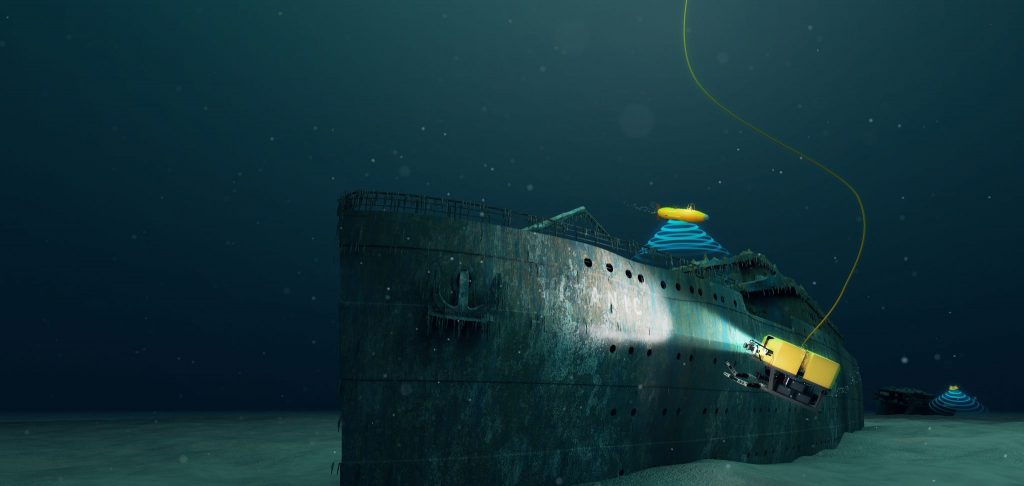The search for the missing Titanic submersible intensifies as officials strive to save the lives of five individuals on board. Recently, a captivating video created by the esteemed Spanish animation company MetaBallStudios has emerged, offering a mesmerizing glimpse into the potential depth of the sub. Through a skillful digital representation of an underwater scenario, the animation gradually descends, revealing submerged landmarks such as the Eiffel Tower, Statue of Liberty, and Burj Khalifa, until finally reaching the bottom of the North Atlantic where the ill-fated Titanic rests.
The Titan submersible, operated by OceanGate, embarked on its mission on a Sunday morning, only to lose contact with its mothership shortly thereafter. Onboard the vessel are notable figures, including Shahzada Dawood, one of Pakistan’s wealthiest individuals, accompanied by his son Suleman, British billionaire Hamish Harding, OceanGate’s CEO Stockton Rush, and renowned French explorer Paul-Henry Nargeolet. With authorities reporting that the oxygen supply will last no more than a day, a sense of urgency permeates the situation.
A comparison image has been created that compares the depth of the Titanic wreckage with well-known structures to help viewers understand the enormous depth involved. Comparing the submerged Titanic wreckage to the Grand Canyon, which has a small height of 6,000 feet (1,828 meters), it is clear that the Grand Canyon is nothing. In comparison, famous structures like the Empire State Building, Big Ben, Willis Tower, Statue of Liberty, and Eiffel Tower appear incredibly small. When compared to the depths of the North Atlantic, even the Burj Khalifa, which stands 2,217 feet (675 meters) tall and is the tallest skyscraper in the world, seems insignificant.
The Titan submersible from OceanGate is over 800% deeper than conventional submarines and can dive to a maximum depth of 13,123 feet (4,000 meters). Sadly, there are worries that these depths may be beyond what the US Navy submarines, which can only dive to 2,000 feet (609 meters), are capable of. As a result, the only option for a successful rescue mission may be the deployment of remotely operated vehicles, which can dive as deep as 20,000 feet (6,096 meters).
The precise location of the submersible remains uncertain, leaving authorities in a state of suspense. The mysterious depths of the North Atlantic conceal the vessel’s whereabouts, making it unclear whether it has settled on the ocean floor or is suspended at mid-water levels. Descending to such extreme depths introduces an otherworldly environment, devoid of sunlight, permeated by chilling temperatures, and subject to tremendous pressure.
As the search and rescue endeavors persist, the fervent hope is that the missing individuals will be located and extracted from the profound reaches of the North Atlantic, ultimately restoring them to safety.

